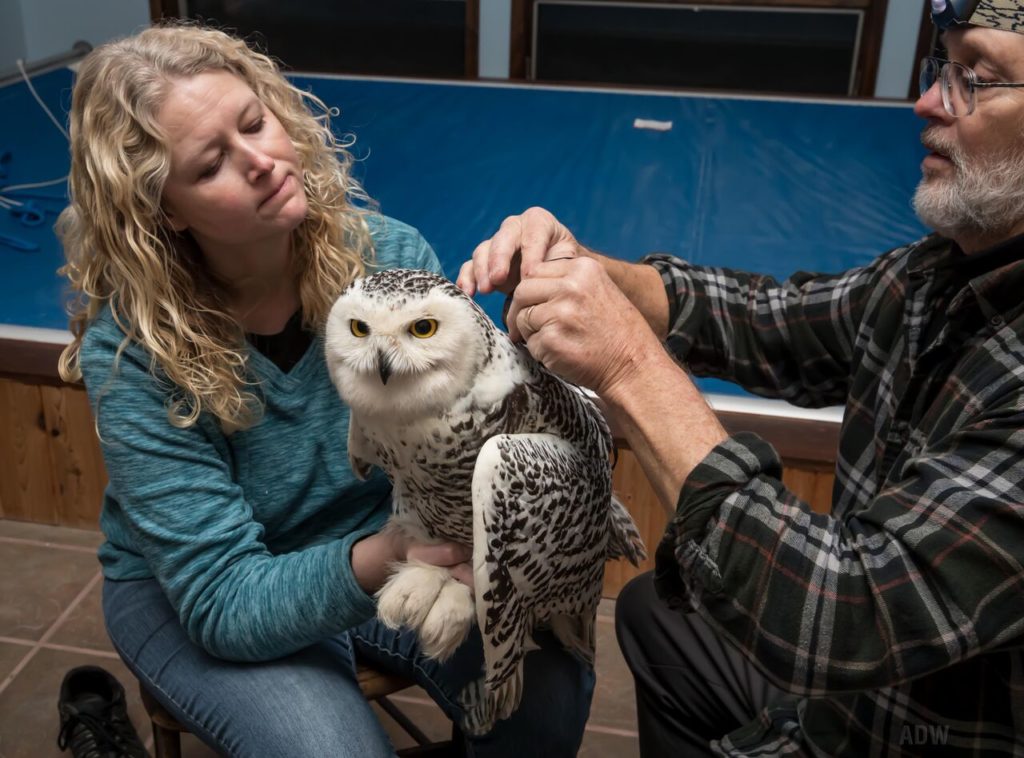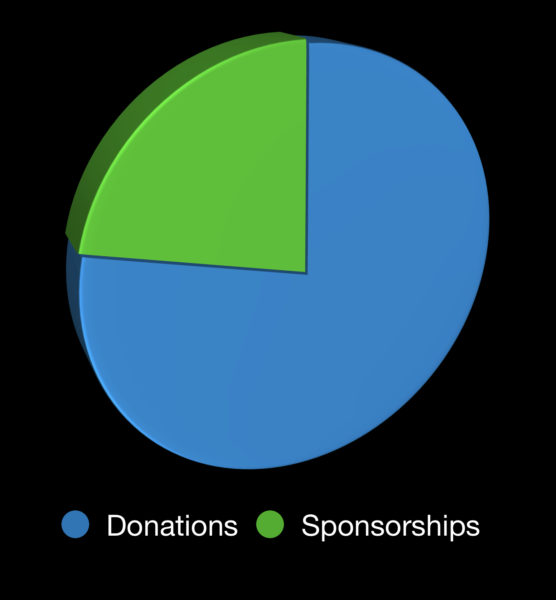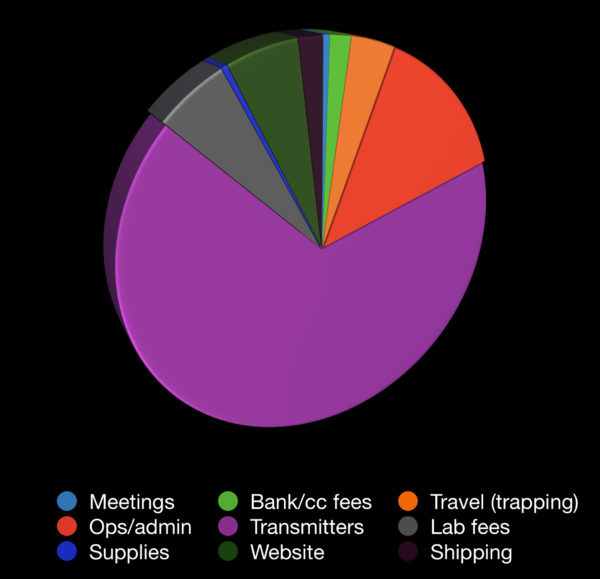
Melissa Mance Coniglio and Tom McDoanld are two of the SNOWstorm team members who donate their time and expertise. (©Aaron Winters)
As we’ve mentioned more than once, the only reason Project SNOWstorm exists is you — the folks who have supported our work from the very beginning five years ago. So as we wind down 2018 — and as many of you are making end-of-the-year donations to your favorite charities — we want to both thank you and show you that we put your gifts to very good, very careful use.
Let’s just admit right up front that a financial report isn’t as exciting as, say, the latest report on our trio of Alaskan owls, or the introduction of a newly tagged bird. But especially at this time of year, it’s important information, which we hope will make you feel even better about your support for Project SNOWstorm.
From the start, we’ve been fortunate to have the Ned Smith Center for Nature and Art in Millersburg, Pa., as our institutional home. That way, all U.S. donations are fully tax deductible. And executive director John Booth, finance director Ruth Boyer and the rest of the NSCNA staff have been incredible to work with.

Where does SNOWstorm’s funding come from? Entirely from donations and sponsorships by conservation groups.
Because we start ramping up for the coming winter in late summer, our fiscal year starts in August. Between Aug. 1, 2017, and July 31, 2018, we received $74,768 — $58,968 in donations, either via our online crowdfunding campaign or direct gifts through the Ned Smith Center, and another $15,800 in sponsorships by organizations like New Jersey Audubon, the Nature Conservancy of New Jersey, and the Delmarva Ornithological Society that underwrote transmitter purchases. (All figures are in U.S. dollars.)
On the expense side, we spent a total of $78,223 during that year. The largest chunk — 72.5 percent — were direct research costs. Transmitter purchases totaled $52,614, while lab fees and toxicology testing added $4,124 during that period.
As we’ve mentioned before, but bears repeating, our research funds go much, much farther because our colleagues at Cellular Tracking Technologies provide their transmitters far below retail, providing an in-kind donation that now exceeds $145,000. And our team of wildlife veterinarians donate their time (and the University of Pennsylvania’s New Bolton Center its facilities) so all we’re paying for on the lab side is the actual sample testing.

More than 72 cents of every dollar we raise goes into transmitters and lab work.
The remaining 27.5 percent of expenses were: operations and administration, 13.8 percent (this partially, but not fully, reimburses the Ned Smith Center for staff time); website costs, 5.4 percent; travel (for trapping teams), 3.7 percent; shipping, 1.9 percent; bank/credit card fees, 1.7 percent; meetings, 0.5 percent; supplies, 0.5 percent.
No expense line for salaries? That’s not a mistake. While a few of the folks with Project SNOWstorm are able to help out, at least in part, through their jobs (usually with state or federal resource agencies or conservation groups) most of us donate our time, totaling thousands of hours per year. We love what we do, we’re passionate about snowy owl research and conservation, and we’re grateful for your help in making it happen. Thank you.
(And if you have been thinking about making a donation this year, and haven’t — well, it’s not too late!)

